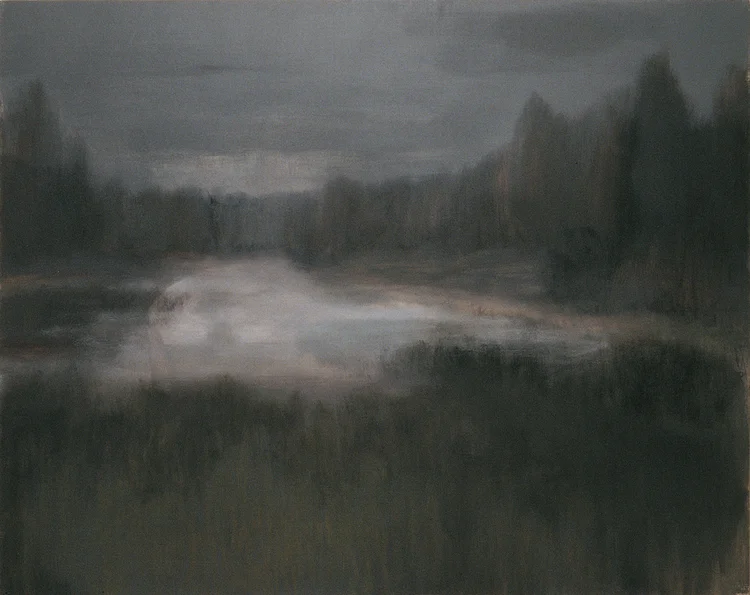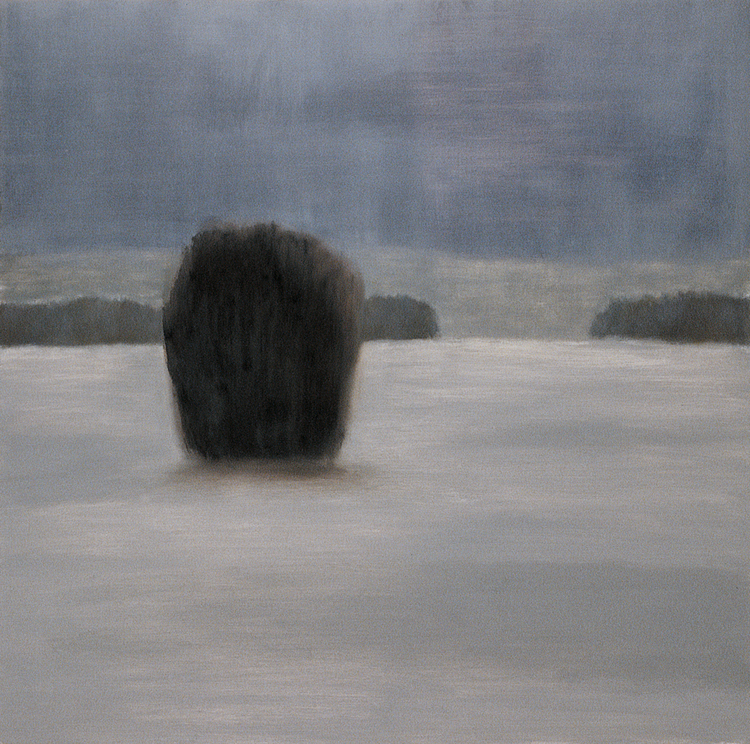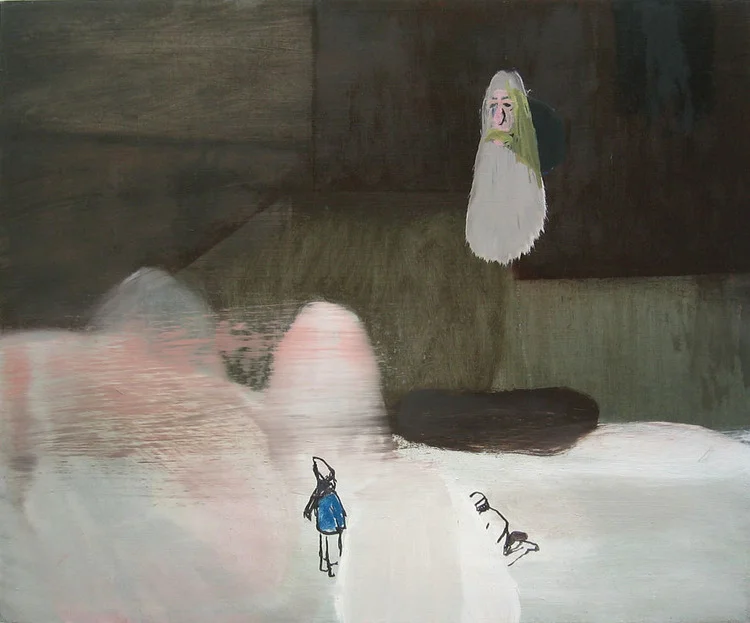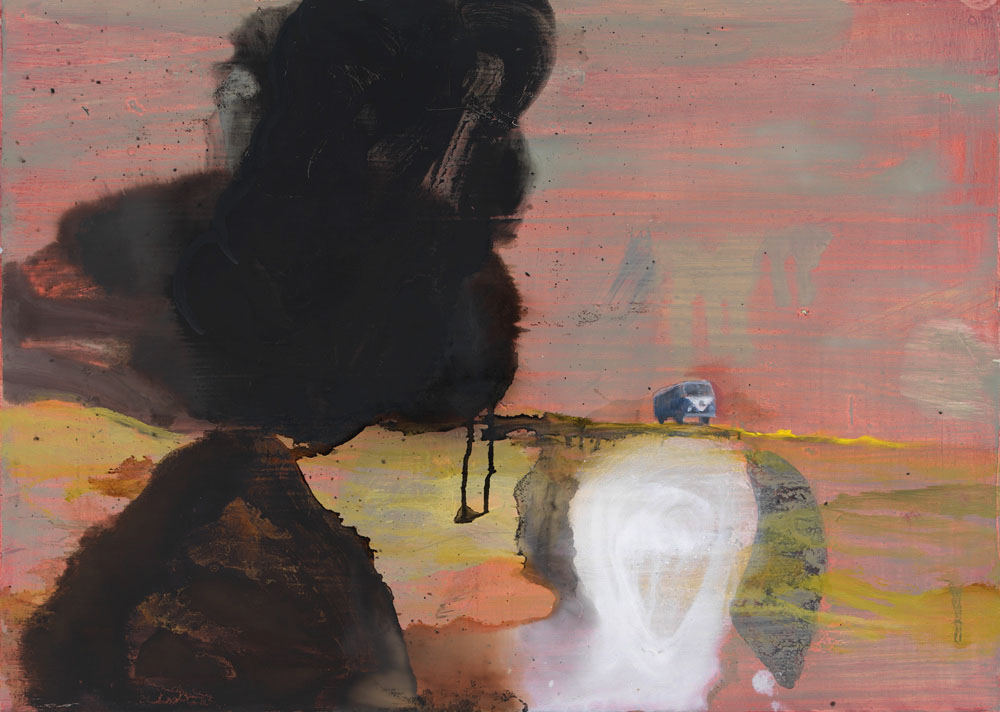Painting as a Lens
Text by Anders Olofsson
From Martin Ålund, Chemistry 2015
The role of painting as a medium for the depiction of reality has a multi-facetted history. Painting long reigned supreme at the top of the hierarchy of artistic practices, largely unchallenged due to the fact that competing forms of expression, such as sculpture, could not entirely liberate themselves from a purely craft-oriented relationship to their own medium. Painting was, at least until the mid 1800s, the perfect medium with which to depict the history of a nation, the ideals worthy of striving for, and the inner essence of beauty. With photography’s emergence on the stage, however, this became impossible, and as a means of avoiding the risk of becoming a historical parentheses, it became critical for painting to reinvent itself, as it were, in the form of abstraction, thereby distancing itself from the type of reality depiction that the camera could achieve so much better.
But getting there was not entirely easy, and both painting as well as photography had to relate to the advancements of technology. The camera became one tool among many for painters, a new kind of sketchpad that aided in quickly creating originals to paintings. But even artists striving for an ever higher degree of abstraction in their depiction of reality made use of what the new technological achievements had to offer. It is, for example, no secret that several prominent impressionists were inspired not only by photography but also by scientific discoveries regarding optics and perception psychology. It was still all about depicting reality, albeit in a manner that went beyond our everyday perception. With the emergence of abstract modernism, the specific nature of the medium became art’s main subject matter. Clement Greenberg’s promotion of a reductionist form of painting that exclusively fulfils its own inherent possibilities constituted the unprecedented conclusion of this development. What, after all, is there left to do once painting has perfected itself and sealed its own fate? Perhaps to appropriate art history in accordance with the postmodern spirit, and create an endless succession of ironic paraphrases, or paint watercolour landscapes for the tourism industry, or what? Ever since the early 2000s, Martin Ålund’s painting has centred on the core of this issue. He has not, however, sought a concrete answer. On the contrary, he has suggested an alternative approach. Instead of striving for an all the more problematic depiction of reality, he has chosen to view his painterly process as an optical instrument, an extended form of seeing that directs itself both out towards the world and inwards to the individual/the artist. In his landscapes from the first years of the 2000s, the painting there functions as the camera lens of an ambitious outdoor photographer. The focus lies at a point beyond or in front of the picture elements, and here the swathes of paint create the feeling that the optical instrument itself is on the verge of clogging up. This is a form of painting that not only relativizes the all-powerful artist, but also leaves the viewer with the impression of the senses falling short. The light appears in places one wouldn’t expect, in a manner inconsistent with traditional principles of composition. It could be a shimmering luminosity behind a stretch of forest or a reflection from a nearly invisible body of water somewhere out in the murkiness. The unexpected is the logical.
As we proceed onwards through Martin Ålund’s production of the first decade of the new millennium, his images transform. Suddenly, small individual details – people or objects – take on an important role in the composition of the images. It is as though they have been thrown into this peculiar world from a diffuse origin. As though they reluctantly participate in a context that has been forced upon them, or as though they have ended up on a rotating stage that constantly changes appearance. But at a closer glance one realizes that this effect is the result of the artist’s method of turning the painterly lens inwards, towards his own inner world, and subsequently “double exposing” his findings with the surrounding world as the ground. The term “ground” is important in this context, for here it is not a question of a foreground or a background. The elements that the artist has focused on and captured from his inner world exist parallel to the depiction of an outer world, regardless of how abstract it may appear. As we approach the end of the first decade of the 2000s, the situation comes to a head. Now the landscapes are no longer diffusely Neo-impressionistic. They have instead taken on a dramatic gravitas reminiscent of German 19th century painting (The Düsseldorf School and Caspar David Friedrich), our own national painter Marcus Larson and Peter Jackson’s set design to the epic film version of J.R.R. Tolkien’s Lord of the Rings. Here we have the fires of existence burning in mountain crevices and atmospheric phenomena opening rifts in a compact darkness. At times one can discern the contours of trees, forests, waterfalls, but they could just as well be the result of optical illusions. Here, however, the symbolic references are brought down to a minimum. Not a trace can be detected of Caspar David Friedrich’s lofty gazing over the predicaments of existence or Marcus Larson’s exoticizing of the nature of the provinces of Småland and Bohuslän. Ålund’s pictorial space is filled with contradictory tendencies, with conflict and struggle as the painterly theme. The artist alternately directs his tool inwards and outwards thus generating an energy and a tension that subsequently can be vented in the concrete depiction. None of the completed paintings are the result of a preplanned strategy. Ålund tentatively tests the ground, revises his artistic practice and solves ancient aesthetic problems as though they were new.
Martin Ålund’s approach is reminiscent of a researcher’s relationship to his or her study object. The artist is no omniscient genius who delivers eternal truths on the condition of the world, but is instead a person who constantly tests the resilience of his own position and who makes use of the shortcomings of the gaze itself as an important part of the creative process. Specifically the faculty of sight is the artist’s – as well as the viewer’s – most vital instrument. Paradoxically, as far as senses go, human vision is in fact relatively mediocre. Birds of prey and even some species of shrimp have far better eyesight than humans. But what makes us unique, both as survivors and as creators and viewers of art is our capacity to connect our faculty of vision with analytic and synthetic thought. This allows us not only to reflect on what we see, but also on how we see. In the field of modern science, from a pop cultural angle, this approach is associated with quantum mechanics, that states that the viewer (or rather the equipment the viewer uses) unconditionally affects the process that is being observed. The physicist Werner Heisenberg describes this so-called uncertainty principle as the influence (interference) exerted on a particle’s momentum that measuring the position of a nuclear particle inevitably gives rise to. This is distinctly different from the situation in the classical Newtonian mechanics where each particle has a defined position and a defined momentum at every given point in time. This discovery has been enthusiastically embraced by humanists that have long searched for a way to puncture the often categorically certain science. The theory actually says nothing about science being less capable of examining reality on a micro level than previously, only that more factors should be included in the process. Which is something that artists have been aware of for quite some time.
Solaris, Andrej Tarkovskij, 1972
In Martins Ålund’s most recent paintings, this experience is conveyed in a new way. In the new series of works there is a stronger focus on materiality than previously, which the title Chemistry also hints at. Here and there, traces of a lost world still appear – a car, a tree, the contours of a forest – but they soon become lost in a coherent weave of paint and toned down movement that seems to have to do more with matter’s inner components than of traditional landscape painting. Here and there, dark areas appear, similar to the black holes of astronomy which actually aren’t holes so much as extremely tightly packed matter that due its gravitational force absorbs all signals that are transmitted to them for research purposes. In line with this reasoning, Martin Ålund depicts a world that evades an externalizing analysis but instead insists on inner observation. At this point, micro and macro-cosmos seem to converge. It is not especially far-fetched to draw a parallel here to Andrei Tarkovsky’s film Solaris, where in the final scene all time frames merge, and as the camera zooms out, the apparent real world turns out to be the product of a consciousness, either cosmic or profoundly individual. Hence the lens that is directed out towards the infinite expanse of the universe also works in the opposite direction, penetrating the depths of our inner selves.
Anders Olofsson
Writer and Editor of Konstperspektiv and Konsten.net
Translation Richard G Carlsson




